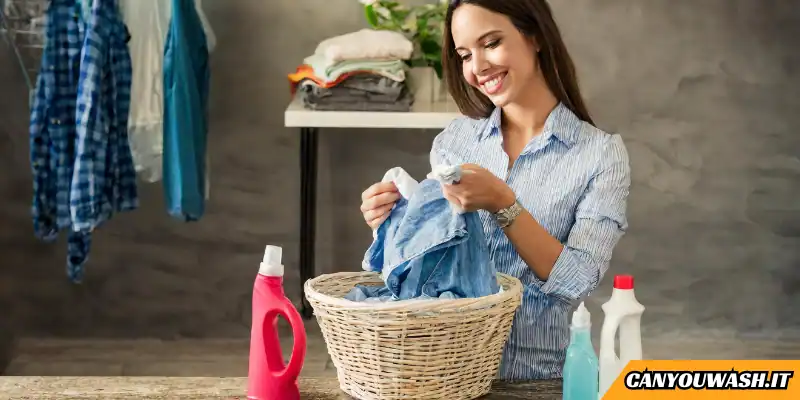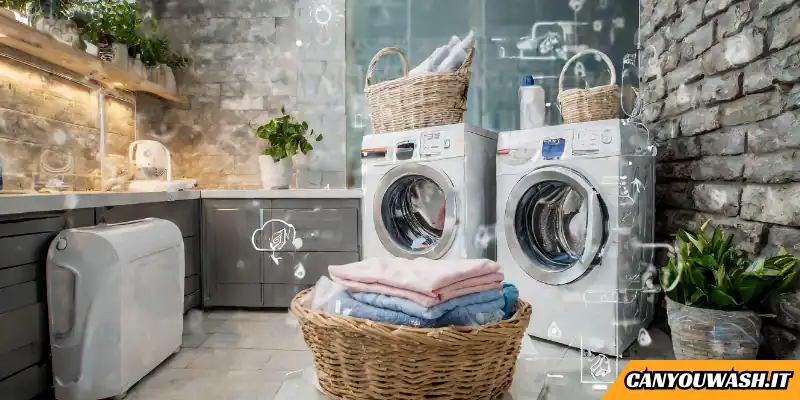Laundry solutions for common stains involve quickly tackling laundry stains by blotting and treating them with dish soap or baking soda. Use cold water for most stains and hot water for grease stains. For stubborn stains, try vinegar or hydrogen peroxide, and be patient for the best results.
What You Will Find in This Guide:
Are you tired of struggling to remove stubborn stains from your clothes? Whether it’s food stains, grease and oil stains, ink stains, blood stains, or grass stains, we’ve all been there. But fret not, as we’ve got you covered with the best laundry solutions for each type of stain.
In this article, we’ll explore the most common stains and provide you with easy removal techniques using simple household ingredients.
So, if you’re ready to bid farewell to those pesky stains, keep reading to discover the secrets of effective stain removal.
Most Common Types of Stains
Stains can occur on various surfaces and are caused by a wide range of substances. Here are some of the most common types of stains:
- Food and Beverage Stains:
- Coffee and Tea Stains: Commonly caused by spills or accidental splashes, these stains can be challenging to remove, especially if they have had time to set.
- Red Wine Stains: Known for their notorious ability to quickly set into fabrics, red wine stains can be persistent and may require immediate attention to prevent permanent discoloration.
- Oil and Grease Stains: Whether from cooking or accidental contact, oil and grease stains can be common on clothing and fabrics. They often require specialized stain removal techniques.
- Grass and Outdoor Stains:
- Mud Stains: Especially prevalent on shoes and clothing during rainy or outdoor activities, mud stains can be stubborn and require pre-treatment before washing.
- Grass Stains: Common on clothing worn during sports or outdoor activities, grass stains can be particularly tough to remove due to the chlorophyll content in grass.
- Ink and Writing Stains:
- Pen and Marker Stains: Accidental ink marks from pens and markers are frequent occurrences and can be problematic, especially on clothing and upholstery.
- Highlighter Stains: Highlighters often contain vibrant and pigmented inks, making their stains stand out. Quick action is essential to prevent these stains from setting.
- Biological and Body Fluid Stains:
- Blood Stains: Accidents happen, and blood stains can be common on clothing and bedding. Treating blood stains promptly is crucial for effective removal.
- Sweat Stains: Over time, sweat can lead to yellowing and discoloration on clothing, particularly in areas with high perspiration. Proper laundering and stain prevention are key.
- Household and Environmental Stains:
- Paint Stains: Accidental spills or splatters during home improvement projects can lead to challenging paint stains. The type of paint (water-based or oil-based) will influence the removal approach.
- Hard Water Stains: Common on glass surfaces and fixtures, hard water stains result from mineral deposits. Specialized cleaning agents are often required to eliminate these stains effectively.
Best Laundry Solutions for Each Type of Stain
Dealing with different types of stains requires specific approaches to effectively remove them. Here are some common types of stains and the best laundry solutions for each:
- Food and Beverage Stains
- Coffee and Tea Stains: Rinse the stain with cold water, then pre-treat with a mixture of vinegar and liquid detergent before laundering. If the stain persists, try using a stain remover specifically designed for tannin-based stains.
- Red Wine Stains: Blot the stain with a clean cloth to absorb excess liquid. Pour salt or white wine over the stain to neutralize it, then rinse with cold water. Pre-treat with a stain remover or a mixture of hydrogen peroxide and liquid detergent.
- Grass and Outdoor Stains
- Mud Stains: Allow the mud to dry completely, then brush off as much as possible. Pre-treat with a stain remover or a mixture of vinegar and liquid detergent before washing.
- Grass Stains: Pre-treat with a mixture of enzyme-based laundry detergent or liquid dish soap and water. Allow it to sit for a while before laundering with cold water.
- Ink and Writing Stains
- Pen and Marker Stains: Dab the stain with rubbing alcohol using a clean cloth. Rinse thoroughly and then launder as usual. For stubborn stains, consider using a commercial stain remover.
- Highlighter Stains: Pre-treat with a mixture of cold water and liquid detergent. For white fabrics, you can also try hydrogen peroxide. Wash immediately after pre-treatment.
- Biological and Body Fluid Stains
- Blood Stains: Rinse the stain with cold water, then pre-treat with a mixture of salt and cold water or hydrogen peroxide. Launder in cold water. Avoid using hot water, as it can set the blood stain.
- Sweat Stains: Pre-treat sweat stains with a mixture of baking soda and water or white vinegar. Wash in cold water to prevent setting the stains. For yellowed areas, consider using oxygen bleach.
- Household and Environmental Stains
- Paint Stains: Depending on the paint type, use an appropriate solvent (like acetone for oil-based paint or rubbing alcohol for latex paint) to blot the stain. Follow up with a pre-treatment using a stain remover or a mixture of liquid detergent and water.
- Hard Water Stains: Create a paste using baking soda and vinegar, apply it to the stained area, and let it sit for a while before scrubbing and rinsing. For glass surfaces, consider using a commercial lime scale remover.
Effective General Tips for Removing Stains
Effective stain removal requires a strategic approach, combining prompt action, pre-treatment, and careful consideration of stain and fabric types.
Here are some detailed tips to ensure successful stain removal:
Tip 1
Act Quickly
Swift attention to stains prevents setting, ensuring successful removal without fabric damage. Address stains promptly to avoid permanent discoloration.
Tip 2
Test on a Small Area First
Test stain removal techniques on a small, inconspicuous area to avoid fabric damage. This step is crucial for sensitive fabrics like silk, wool, or lace.
Tip 3
Use Cold Water for Blood Stains
Opt for cold water when dealing with blood stains. It breaks down blood proteins effectively without harming delicate fabrics. Dabbing with a cold water-soaked cloth enhances results.
Tip 4
Avoid Heat for Grease and Oil Stains
When treating grease and oil stains, avoid heat to prevent setting. Blot the stain, apply a gentle detergent for oil-based stains, follow product instructions, and wash in the appropriate water temperature.
Tip 5
Always Follow Clothing Care Instructions
Adhere to care instructions for successful stain removal without compromising fabric integrity. Care labels offer tailored guidance for specific stains and fabric types, preserving garment quality.
Final thoughts 💭
Conquering common stains in your laundry doesn’t have to be a daunting task. By following these effective solutions and laundry tips, you can keep your clothes looking fresh and stain-free. Remember, quick action, proper pre-treatment, and choosing the right laundry techniques are key to winning the battle against stains. Happy laundering!





Leave a Reply